Abstract
A biological safety cabinet was tested to determine the effect of crossdrafts (such as those created by normal laboratory activity or ventilation) upon the ability of the cabinet to protect both experiments and investigators. A simple crossdraft, controllable from 50 to 200 feet per min (fpm; 15.24 to 60.96 m/min), was created across the face of the unit. Modifications of standardized procedures involving controlled bacterial aerosol challenges provided stringent test conditions. Results indicated that, as the crossflow velocities exceeded 100 fpm, the ability of the cabinet to protect either experiments or investigators decreased logarithmically with increasing crossdraft speed. Because 100 fpm is an airspeed easily achieved by some air conditioning and heating vents (open windows and doorways may create velocities far in excess of 200 fpm), the proper placement of a biological safety cabinet within the laboratory--away from such disruptive air currents--is essential to satisfactory cabinet performance.
Full text
PDF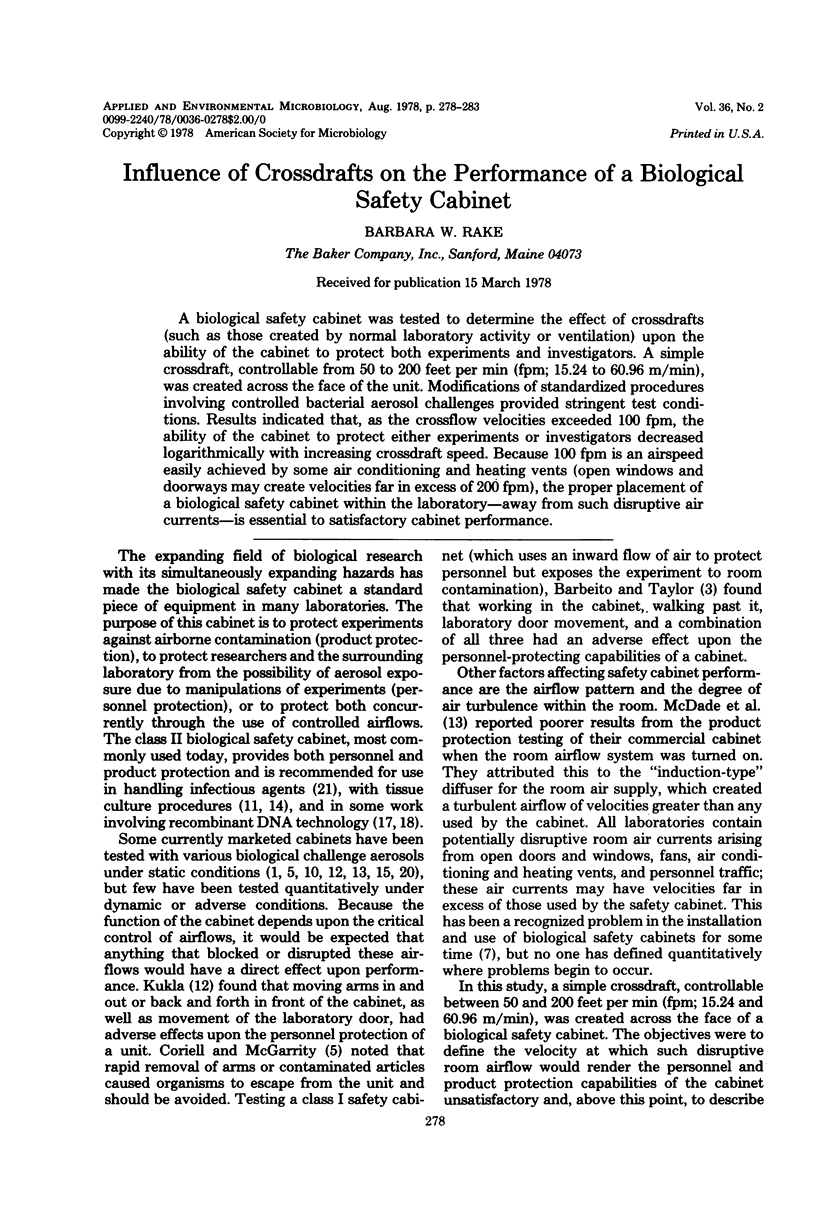
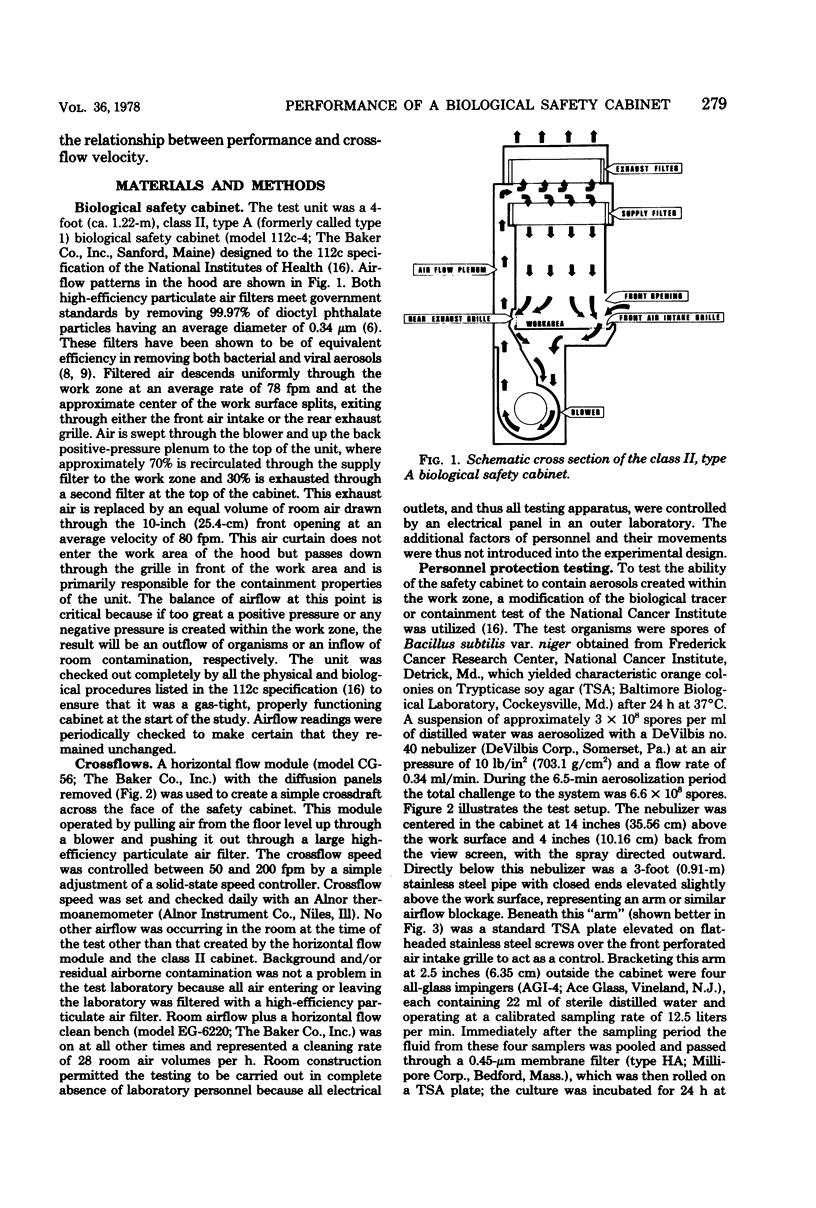
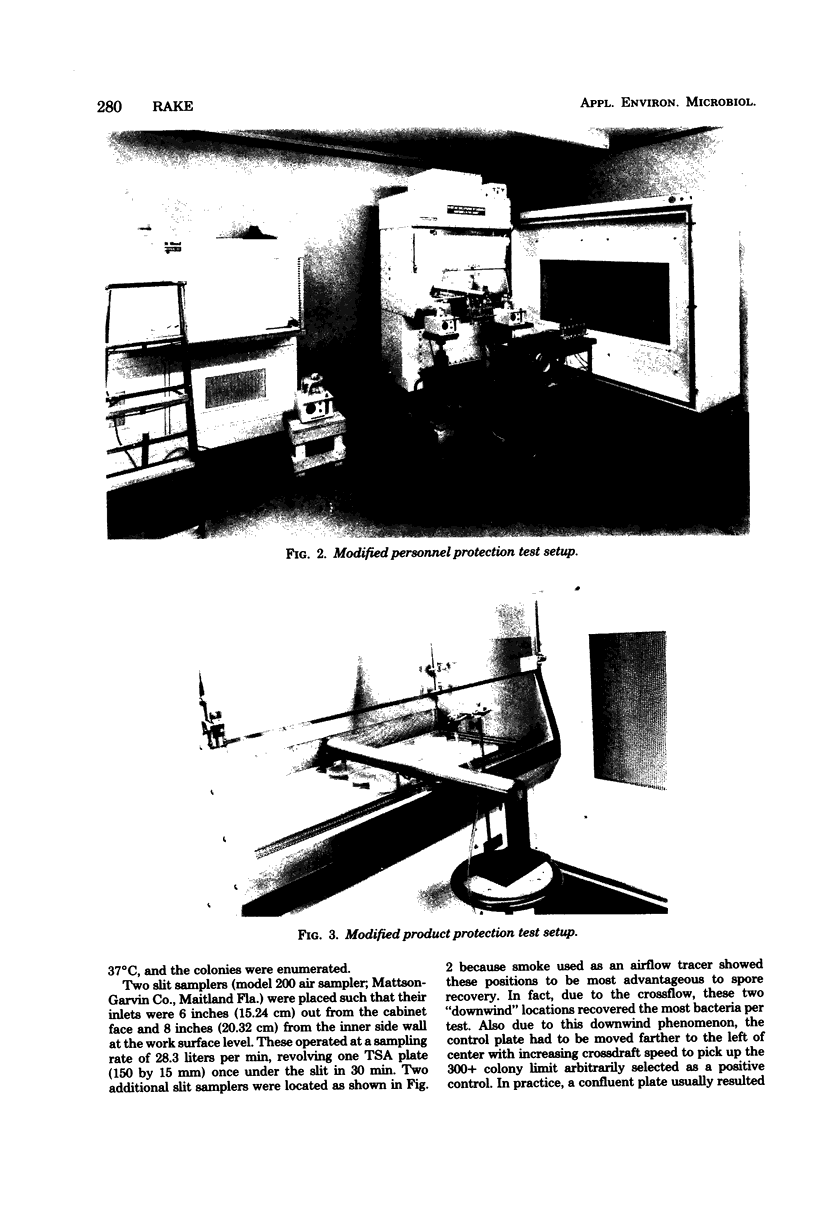

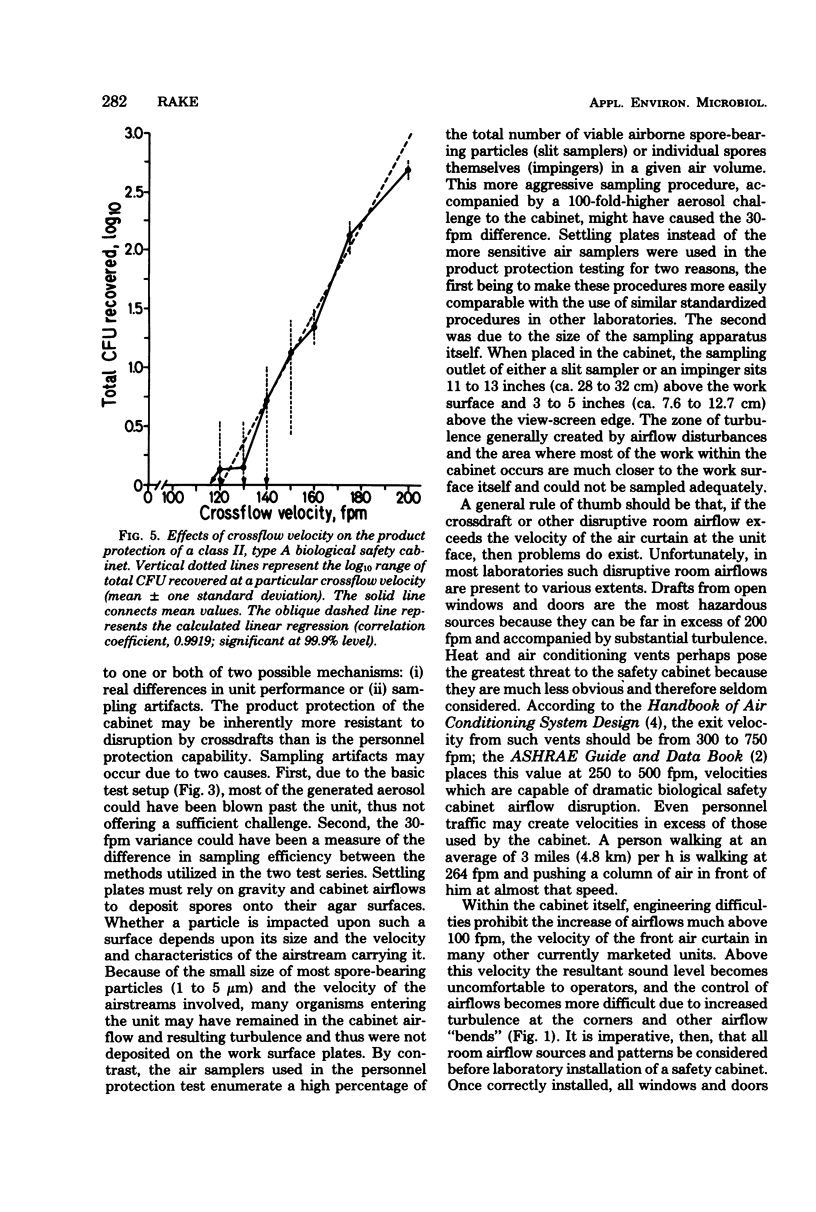
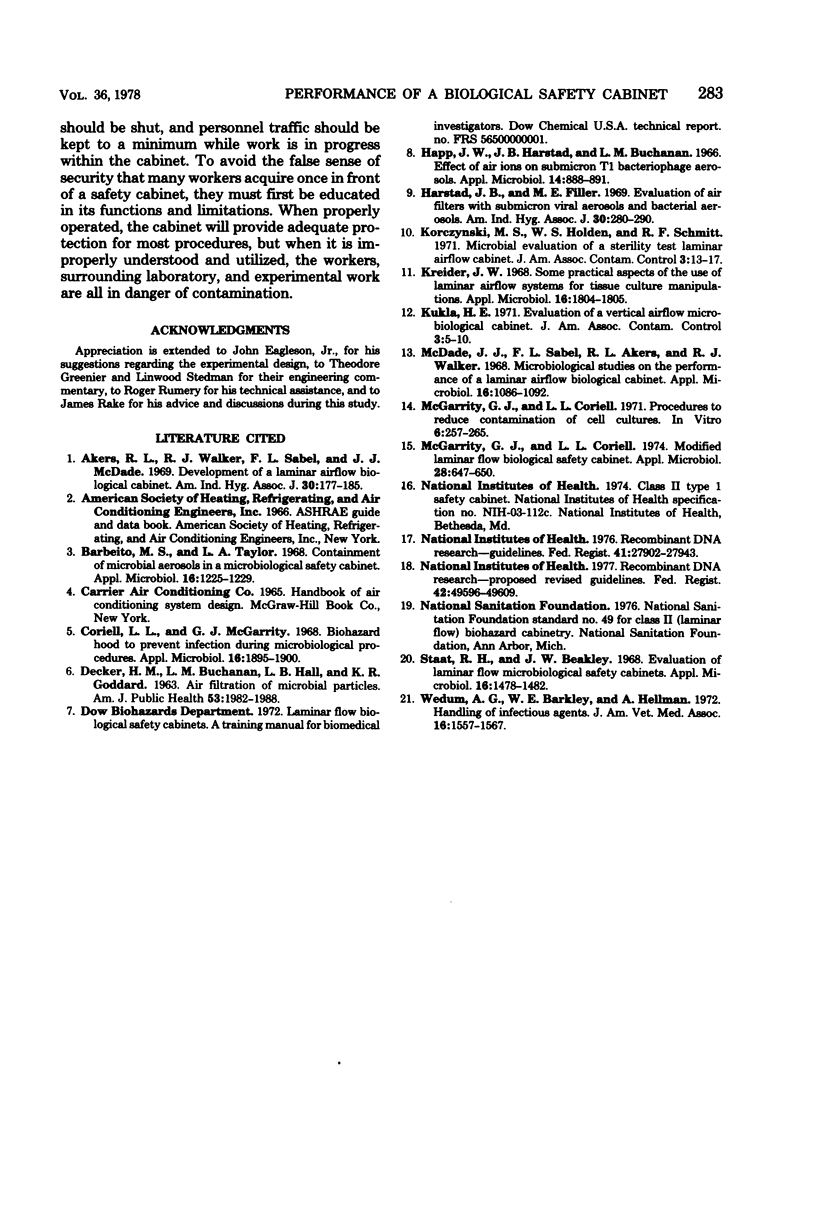
Images in this article
Selected References
These references are in PubMed. This may not be the complete list of references from this article.
- Akers R. L., Walker R. J., Sabel F. L., McDade J. J. Development of a laminar air-flow biological cabinet. Am Ind Hyg Assoc J. 1969 Mar-Apr;30(2):177–185. doi: 10.1080/00028896909343106. [DOI] [PubMed] [Google Scholar]
- Barbeito M. S., Taylor L. A. Containment of microbial aerosols in a microbiological safety cabinet. Appl Microbiol. 1968 Aug;16(8):1225–1229. doi: 10.1128/am.16.8.1225-1229.1968. [DOI] [PMC free article] [PubMed] [Google Scholar]
- Coriell L. L., McGarrity G. J. Biohazard hood to prevent infection during microbiological procedures. Appl Microbiol. 1968 Dec;16(12):1895–1900. doi: 10.1128/am.16.12.1895-1900.1968. [DOI] [PMC free article] [PubMed] [Google Scholar]
- DECKER H. M., BUCHANAN L. M., HALL L. B., GODDARD K. R. AIR FILTRATION OF MICROBIAL PARTICLES. Am J Public Health Nations Health. 1963 Dec;53:1982–1988. doi: 10.2105/ajph.53.12.1982. [DOI] [PMC free article] [PubMed] [Google Scholar]
- Happ J. W., Harstad J. B., Buchanan L. M. Effect of air ions on submicron t1 bacteriophage aerosols. Appl Microbiol. 1966 Nov;14(6):888–891. doi: 10.1128/am.14.6.888-891.1966. [DOI] [PMC free article] [PubMed] [Google Scholar]
- Harstad J. B., Filler M. E. Evaluation of air filters with submicron viral aerosols and bacterial aerosols. Am Ind Hyg Assoc J. 1969 May-Jun;30(3):280–290. doi: 10.1080/00028896909343122. [DOI] [PubMed] [Google Scholar]
- Kreider J. W. Some practical aspects of the use of laminar airflow systems for tissue culture manipulations. Appl Microbiol. 1968 Nov;16(11):1804–1805. doi: 10.1128/am.16.11.1804-1805.1968. [DOI] [PMC free article] [PubMed] [Google Scholar]
- McDade J. J., Sabel F. L., Akers R. L., Walker R. J. Microbiological studies on the performance of a laminar airflow biological cabinet. Appl Microbiol. 1968 Jul;16(7):1086–1092. doi: 10.1128/am.16.7.1086-1092.1968. [DOI] [PMC free article] [PubMed] [Google Scholar]
- McGarrity G. J., Coriell L. L. Modified laminar flow biological safety cabinet. Appl Microbiol. 1974 Oct;28(4):647–650. doi: 10.1128/am.28.4.647-650.1974. [DOI] [PMC free article] [PubMed] [Google Scholar]
- McGarrity G. J., Coriell L. L. Procedures to reduce contamination of cell cultures. In Vitro. 1971 Jan-Feb;6(4):257–265. doi: 10.1007/BF02625938. [DOI] [PubMed] [Google Scholar]
- Staat R. H., Beakley J. W. Evaluation of laminar flow microbiological safety cabinets. Appl Microbiol. 1968 Oct;16(10):1478–1482. doi: 10.1128/am.16.10.1478-1482.1968. [DOI] [PMC free article] [PubMed] [Google Scholar]
- Wedum A. G., Barkley W. E., Hellman A. Handling of infectious agents. J Am Vet Med Assoc. 1972 Dec 1;161(11):1557–1567. [PubMed] [Google Scholar]




